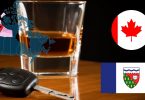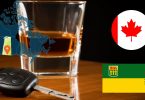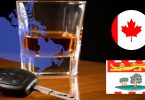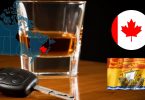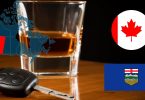In Nunavut, driving is permissible if your blood alcohol concentration (BAC) remains under 0.05%, equivalent to 50 milligrams of alcohol per 100 milliliters of blood.
What is the legal alcohol limit for driving in Nunavut?
In Nunavut, the legal limits for blood alcohol concentration (BAC) while driving vary depending on the driver’s license type and age. It’s crucial for all drivers to adhere to these regulations to ensure safety on the roads. Below are the specific legal BAC limits for different categories of drivers:
- Regular Drivers: The legal BAC limit is 0.08%, meaning it’s illegal to drive with a BAC above this threshold.
- Commercial License Holders: A zero tolerance policy is in effect, requiring a 0% BAC to legally operate commercial vehicles.
- Minors (Under 21) and Novice Drivers: It is illegal to drive with any detectable amount of alcohol in your system, enforcing a strict zero tolerance policy.
Drink and Drive Penalties and Punishments in Nunavut
Driving under the influence of alcohol or drugs is a serious offense in Nunavut, with strict penalties and punishments designed to deter impaired driving and ensure the safety of all road users. The laws encompass both territorial penalties under the Motor Vehicles Act and federal penalties under the Criminal Code. It’s important for drivers to understand these consequences and regularly check the official state’s website for any updates or changes to legislation.
Territorial Penalties (Motor Vehicles Act)
- Zero Tolerance Policy: For novice drivers, drivers under the age of 22, and operators of certain commercial vehicles, any detectable amount of drugs or alcohol results in penalties. This includes drivers of:
- Tractors and combinations of a tractor with trailers
- Straight trucks
- Taxis
- Vehicles with three or more axles
- Buses, including school buses
- Emergency vehicles
- Other vehicles as prescribed under the Motor Vehicles Act
- Penalties for Specific Driver Categories:
- Novice drivers and those under 22: 30-day administrative licence suspension/disqualification.
- Specified commercial vehicle drivers: 3-day administrative licence suspension/disqualification. If a driver is also a novice or under 22, the 30-day rule applies.
- General Penalties:
- A 24-hour suspension/disqualification can be issued if an officer believes a driver’s ability is impaired by drugs, alcohol, or fatigue.
- For BAC exceeding .05%, a 24-hour suspension is the standard, potentially escalating to 30 days based on previous offenses.
- BAC exceeding .08% leads to a 90-day administrative licence suspension/disqualification.
- Penalties also apply for failing or refusing a Standardized Field Sobriety Test or evaluation by a Drug Recognition Expert.
Federal Penalties (Criminal Code)
- It’s a criminal offense to operate any motor vehicle, vessel, aircraft, snowmobile, or all-terrain vehicle while impaired.
- Operating a vehicle over the prohibited blood drug concentration or blood alcohol concentration is illegal.
- Penalties may include fines, driving prohibitions, and imprisonment.
For detailed information on Criminal Code laws and penalties, visiting the Federal Department of Justice website is recommended. This comprehensive approach to impaired driving legislation underscores the seriousness with which Nunavut and Canada address the issue, prioritizing public safety and legal compliance.
How can I calculate if my alcohol blood limit is legal in Nunavut
Understanding and adhering to the legal blood alcohol concentration (BAC) limits in Nunavut is crucial for safe driving. Police in Nunavut use specific methods to determine if a driver is operating a vehicle within the legal BAC limits.
Police Methods for BAC Determination in Nunavut
The primary method used by law enforcement to assess a driver’s BAC level is through the use of breathalyzer tests. These devices offer an immediate measurement of a person’s BAC, allowing officers to determine if it exceeds the legal limit. In cases where breathalyzer results are disputed or in serious incidents, blood tests may be conducted to provide a precise BAC reading.
Recommendations for Self-Checking Your BAC Level
As an experienced phlebotomist with a decade of experience, I recommend the following methods for individuals to self-assess their BAC levels, though it’s important to remember these are not substitutes for law enforcement’s assessments.
- Use a High-Quality Alcohol Breathalyzer:
- The BACtrack S80 is an excellent choice for those in Nunavut, offering professional-grade accuracy. It is DOT & NHTSA Approved and FDA 510(k) Cleared, making it one of the most reliable options available. Keeping a device like this in your vehicle can be invaluable, as it provides a quick way to estimate your BAC, potentially preventing the decision to drive while impaired.
- Utilize a BAC Calculator:
- I have collaborated with fellow phlebotomists and web developers to create an online BAC calculator. This tool estimates your BAC based on inputs such as the amount of alcohol consumed, your weight, and the time over which you’ve been drinking. It’s a helpful resource for getting a general idea of your BAC level.
Important Considerations
It’s essential to remember that both these methods—while useful for getting an estimate of your BAC—may not provide 100% accurate results. Factors such as metabolism, recent food intake, and the type of alcohol consumed can all affect BAC readings. Therefore, these tools should be used as guidelines to assist in making responsible decisions about driving. They can offer valuable insights and potentially deter you from driving if your BAC is close to or exceeds the 0.05% limit.
Always err on the side of caution and if in doubt, choose not to drive. It’s better to seek alternative transportation than to risk the consequences of impaired driving.
Ways to Avoid Driving with a High BAC in Nunavut
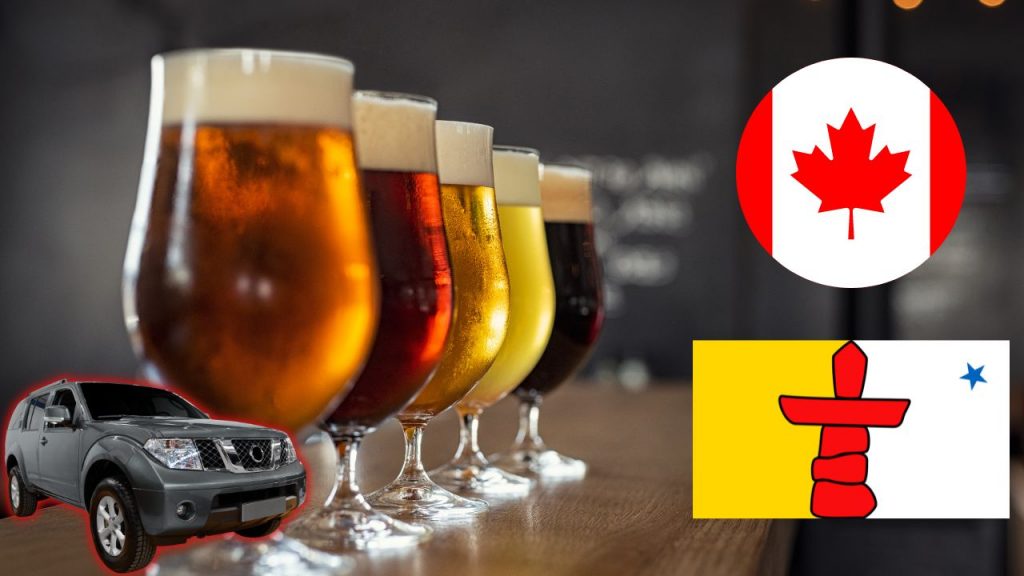
Driving under the influence of alcohol poses significant risks, not just to the driver but to everyone on the road. To ensure safety and compliance with legal BAC limits in Nunavut, consider these practical alternatives to driving after consuming alcohol.
1. Utilize Local Taxi Services
One of the most effective ways to avoid driving with a high BAC is to plan not to drive at all if you anticipate drinking. In places like Iqaluit, local taxi companies such as Caribou Tuktu Cabs provide reliable transportation services. In Rankin Inlet, Ti Taxi offers a safe way to get home without taking unnecessary risks.
2. Designated Driver Services
For those occasions when you’ve driven to a location and then consumed alcohol, leaving your vehicle behind might not be your preferred option. In such cases, designated driver services are a fantastic solution. These services send a driver to your location to drive you home in your own car. In Iqaluit, DRIVING FORCE is a reputable option, while Canada Transport provides similar services in Rankin Inlet. A simple Google search for “designated driver service” followed by your city name should help you find available services in your area.
Remember, the goal is to ensure not just your safety but that of everyone on the road. By making responsible choices and utilizing the alternatives available, you can enjoy your time out without the risks associated with impaired driving.
Obeying Impaired Driving Laws in Nunavut
Impaired driving rates in the territories have historically been higher than in the provinces, yet Nunavut reported the lowest rates among the territories in 2019. The local government actively combats this issue through strict law enforcement and public education on the dangers of alcohol consumption and driving impaired.
It’s crucial to emphasize that the purpose of discussing impaired driving in Nunavut is to inform, not to condone driving under the influence. While staying within legal BAC limits is permissible, the safest approach is to avoid driving after drinking altogether. Alternatives like taking a cab or utilizing a designated driver service are recommended, and staying informed on the latest impaired driving laws by visiting official Nunavut websites is advised.
Numerous safe transportation options exist for those who have consumed alcohol. Whether it’s relying on a friend, a taxi service, or a designated driver, the priority should be to ensure your BAC remains below the legal limit. However, even minimal alcohol intake can impair judgment and reflexes, making it wise to opt for caution and prioritize safety over convenience.



